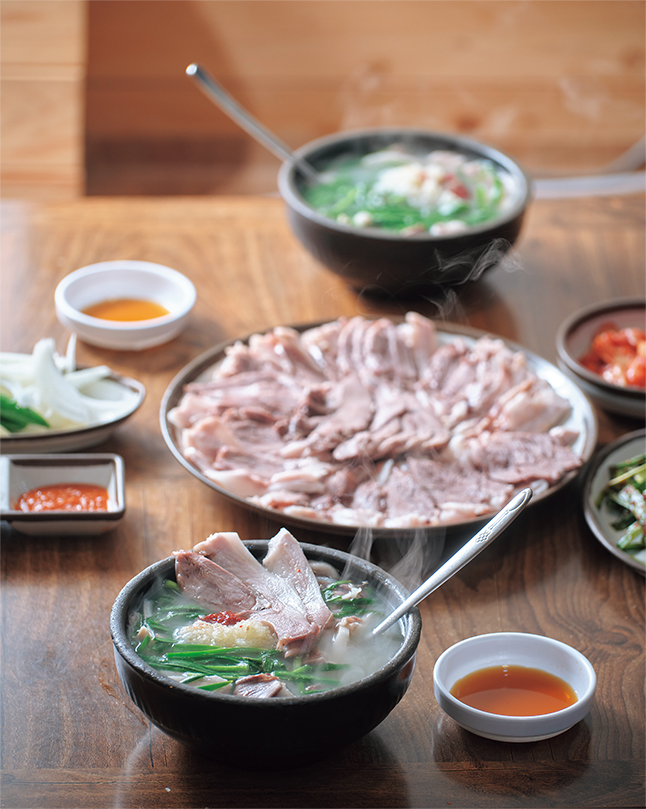
Local Dining - A Day in Busan North Port Area
- Written by Jang Heejoo
- Photographed by Kim Byounggu
Historical Dishes
Busan’s representative local food goes hand in hand with the history of exodus. Therefore, the food of Busan can be said to be the food of sorrow. Let’s take a look at some dishes that represent Busan, even as they mask a bitter history. What makes these dishes so special?

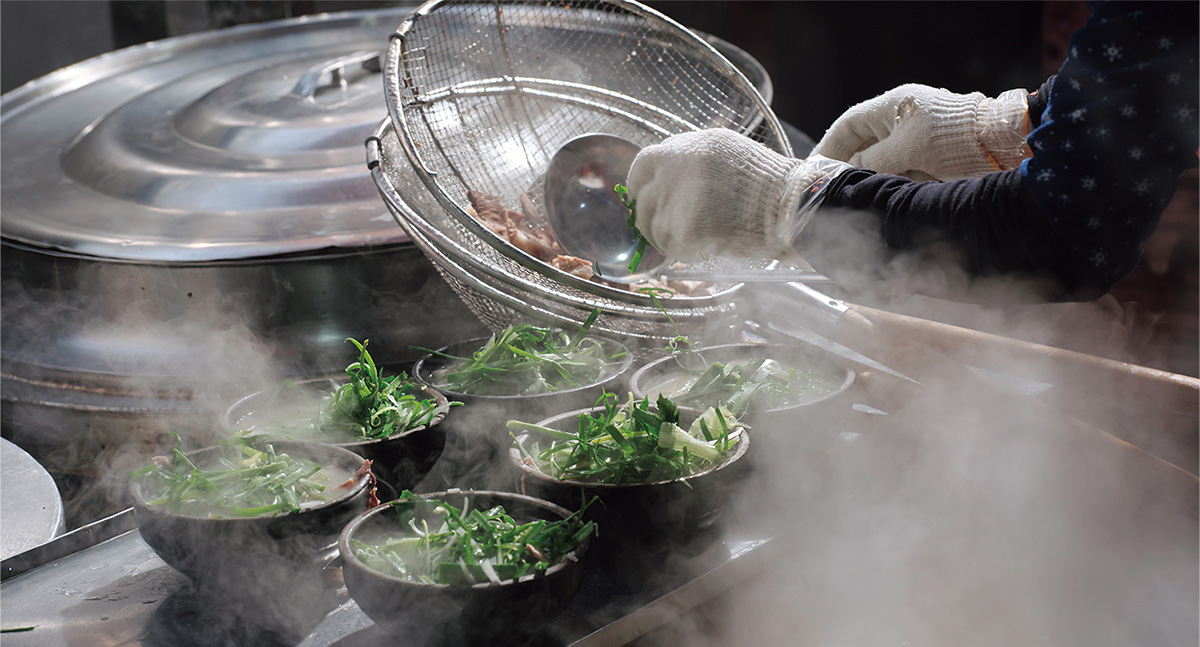
A market vendor adds ingredients to the bowl of dwaeji gukbap.
The Busan North Port Area has a rather insignificant influence on tourists today compared to what it had on Busan back in the day. But, this area is a place where you can experience the life and history of Busan up close.
Thick Broth and Juicy Meat
When Korea was still reeling from the Korean War, “dwaeji gukbap (pork and rice soup)” was a comforting dish that helped refugees cope with their sorrow of being away from home and the hardships of life. Currently, it is a staple dish in Busan and a cultural delicacy that foodies visiting Busan must try.
It is known that the origin of dwaeji gukbap is the Korean War. Finding a source of food to eat at the time was a challenge for the refugees. In order to make dwaeji gukbap, they used pork meat and bones from US military bases. Perhaps that’s why dwaeji gukbap restaurants prospered, especially in the areas where US military bases were located.
There are now reportedly more than 1,000 dwaeji gukbap restaurants in Busan as a result of the subsequent expansion of these restaurants throughout the city. You can easily come across dwaeji gukbap restaurants just about anywhere in Busan, and the local residents of Busan regard it as one of the historically significant dishes that best represent their city.
The primary feature of Busan dwaeji gukbap is that it is made using pork bones, which gives the soup its distinctive white color. Additionally, the top is garnished with thickly sliced pork, which adds a unique texture. Dwaeji gukbap gains a savory flavor from the “minced seasoning,” which is a mixture of different spices. Red pepper powder, green onions, garlic, onions, soy sauce and salty soup are combined to create the minced seasoning. Depending on preference, minced seasoning can be added or removed. In particular, you can adjust the saltiness level with this seasoning.
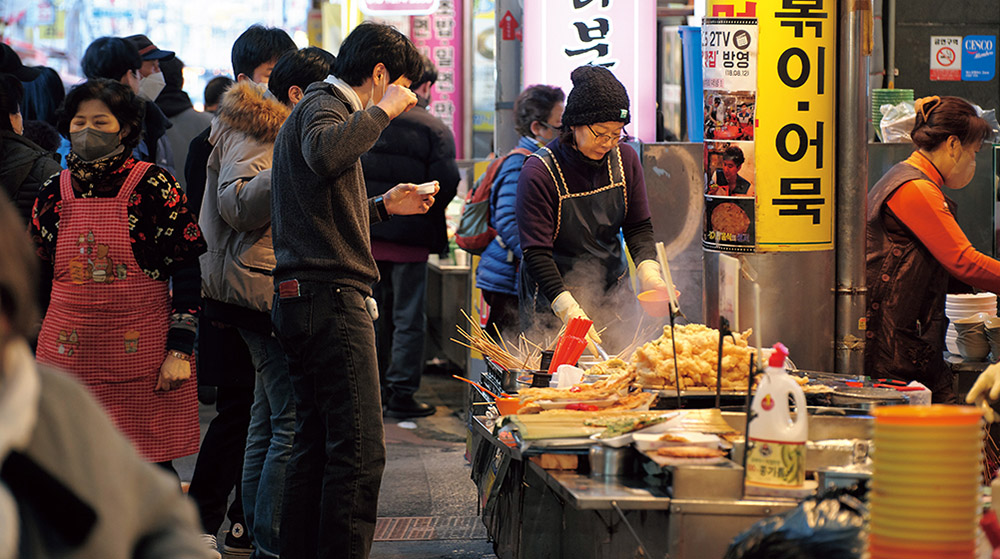
Eomuk are the repersentative street food of Busan.
Signature Street Foods
“Bibimdangmyeon (spicy glass noodles)” was another dish that quenched people’s hunger during the evacuation. Nowadays, it has become a specialty that can be tasted anywhere in the Busan market. Since you can consume it right away, it is also called “fast food” born from the history of Busan.
“Dangmyeon (glass noodles)” introduced during the Korean War became a staple food for refugees. This is because of the chewy texture and the fact that they do not get mushy even after boiling. Refugees liked it because they could fill up on just a small amount of the noodles.
Especially in Busan, bibimdangmyeon can be pur-chased from a wide variety of food stands and restaurants in the Gukje Market. The seasoning for bibimdangmyeon is straightforward, yet each person may have their own formula for taste. Its ingredients are red pepper paste, sugar and sesame oil. Pickled radish, chives and seaweed are added as garnish.
One dish whets your appetite when the cold wind blows-broth-cooked eomuk (fish cake). Busan is the birthplace of eomuk. Indeed, the term “Busan eomuk” has nearly become a proper noun. Busan eomuk uses locally caught fish. It is made by combining salt and mashed fish meat with flour, then kneading and shaping it.
Busan eomuk is a typical street food and a beloved winter snack. The dish has become so widespread that you can easily find it at food stalls and snack bars. It tastes great, just as long as you don’t overcook it.
Dwaeji gukbap, bibimdangmyeon and eomuk are foods that can be found everywhere in Busan. For a more authentic culinary experience, consider visiting Bupyeong Kkangtong Market. You will be greeted by local merchants from Busan in their friendly dialect.
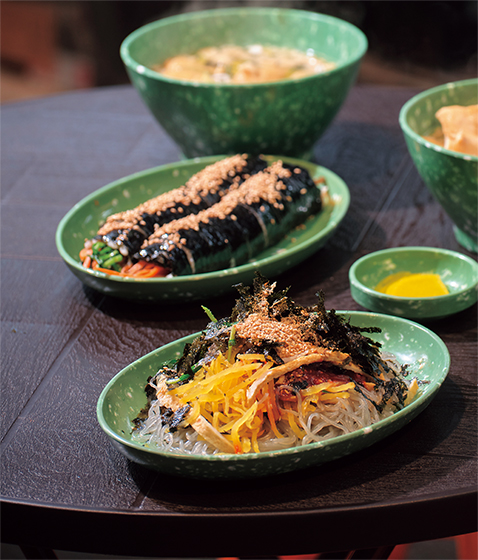
Bibimdangmyeon is usually served with sesame seeds, seaweed,
shredded pickled radish, fish cakes, and bibimjang
(spicy red pepper paste).
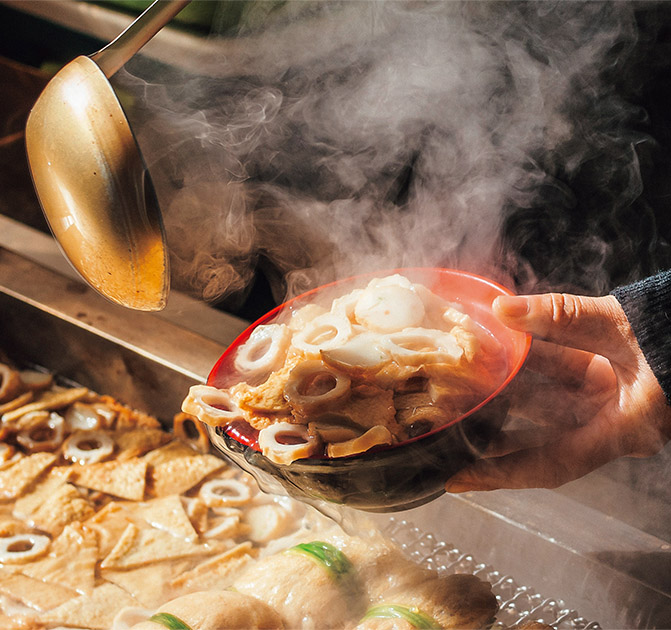
Hot eomuk are especially popular during winter.





